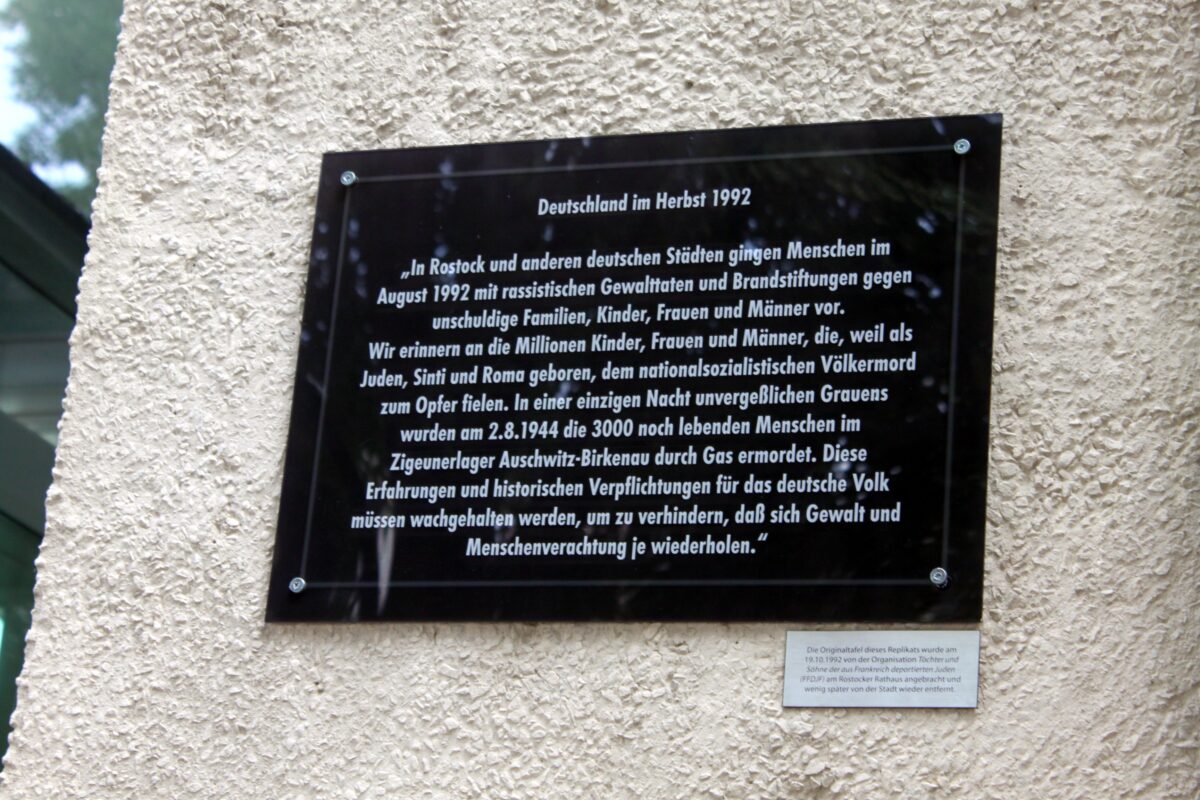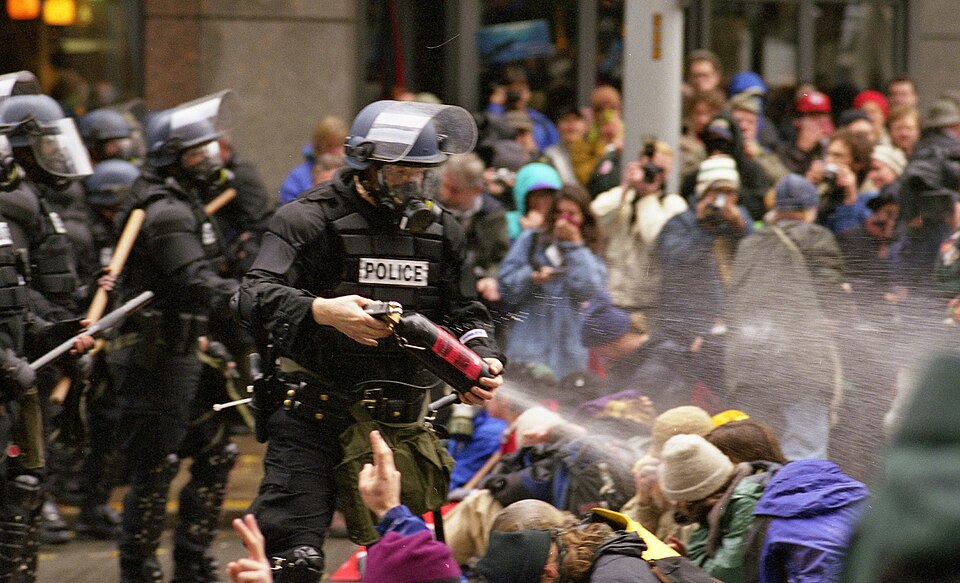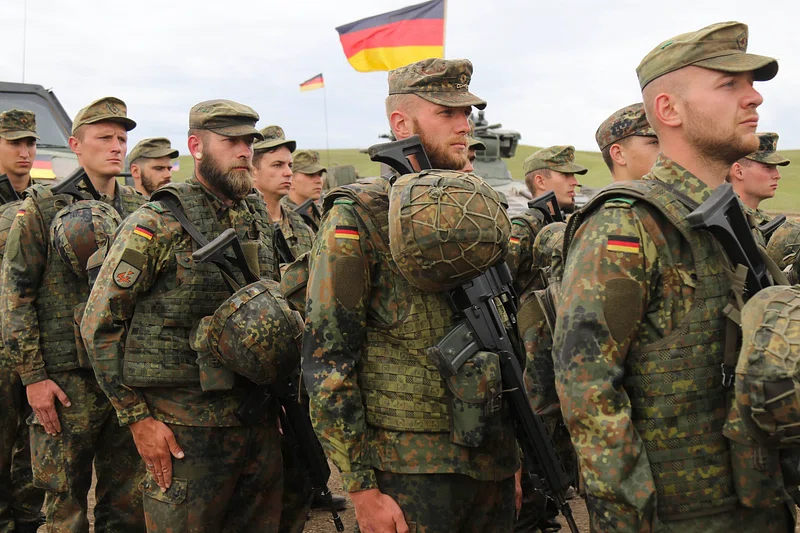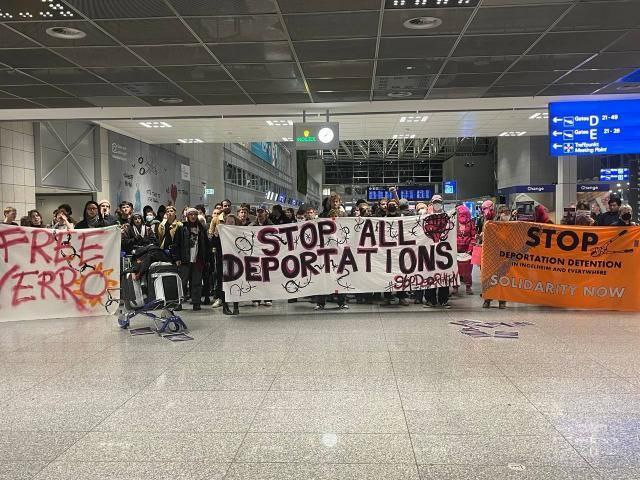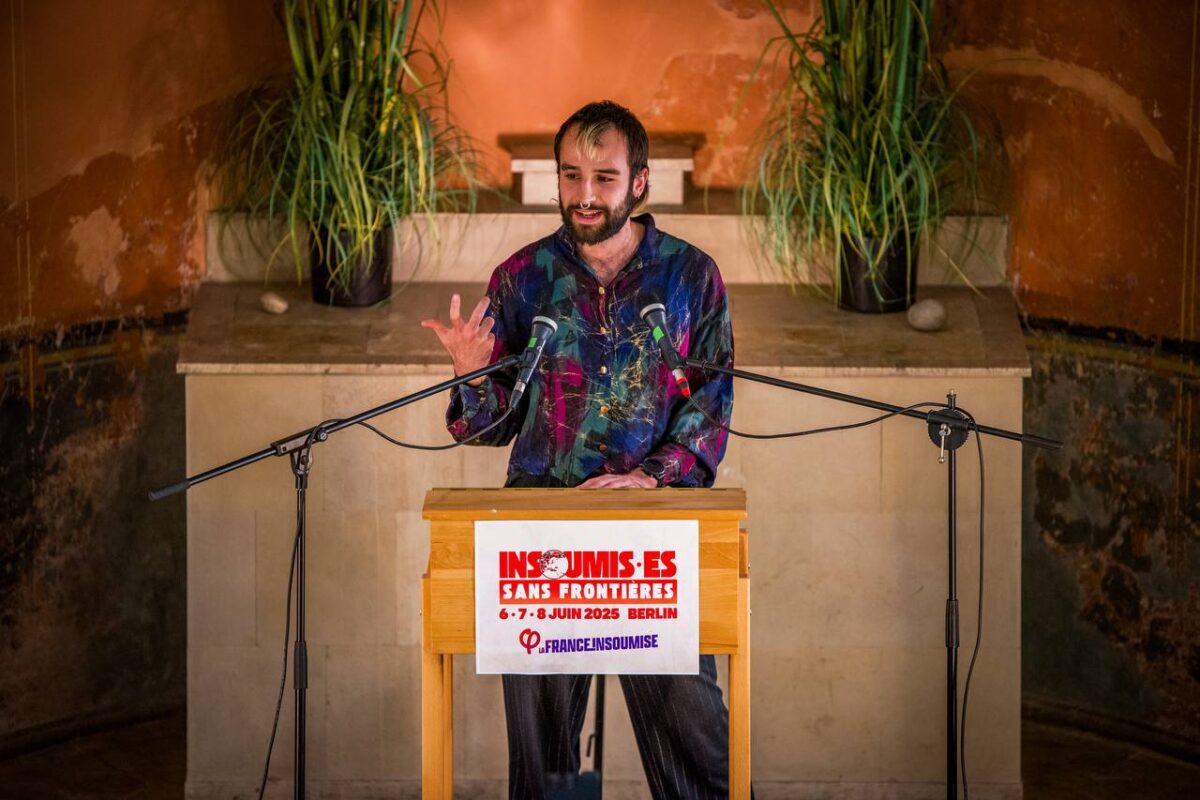In late August 1992, right-wing extremists converged on the Lichtenhagen neighbourhood of the northern German city of Rostock. On the 22nd of August, they first attacked the heavily under-resourced refugee centre housing Roma people who had arrived from Eastern Europe. Upon the evacuation of the refugee centre, the rioters turned to the so-called Sonnenblumenhaus, a large apartment block named for the mural of sunflowers on the side, where Vietnamese contract workers lived.
The gathered right-wingers stayed outside the Sonnenblumenhaus for several days in a celebratory atmosphere, with barbecues and beer, until on the evening of the 24th, when the police suddenly retreated. The crowd then began throwing molotov cocktails through the windows of the lower-storey apartments, and eventually broke into the building. Residents of the Sonnenblumenhaus, along with several journalists, managed to escape through the roof to a neighbouring building. Amazingly, everyone made it out alive.
These attacks took place within the context of numerous other racist and right-wing assaults across Germany at the time, alongside widespread and consistently racist coverage in mainstream German media of the supposed migration crisis at the time. The Rostock attacks themselves were broadcast live on television. The state’s response to this wave of racist violence was not to strengthen protections for migrants, but instead to severely restrict the right to asylum in Germany, which required an amendment to the Basic Law, the country’s constitution.
While the German states and many Germany institutions have been slow to recognise what happened in August 1992, after decades of debate and grassroots organising, the events are now widely recognised as a pogrom. This recognition marks an important acknowledgment of the structural racism that created the conditions for Rostock-Lichtenhagen, while the various arms of the state stood back and watched.
